Food allergies in children pdf
1 Food allergy Food allergy occurs in around 1 in 10 infants, 1 in 20 children and in about 2 in 100 adults. The most common triggers are egg, cow’s milk, peanut, tree …
Food allergy is affecting the lives of millions of people around the world and is on the rise. The emergency and life- The emergency and life- threatening nature of the disease with the burden of anaphylaxis and its increasing prevalence, makes it a major
This guideline covers assessing and managing food allergy in children and young people under 19. It aims to improve symptoms such as faltering growth and eczema by offering advice on how to identify food allergy and when to refer to secondary or specialist care.
dermatitis have a true food allergy.12,13 Delayed reactions to foods can occur in patients with atopic der mat itis and are not primarily IgE-mediated.
INTRODUCTION The prevalence of food allergy in children is on the rise worldwide and this has been described as an unanticipated “second wave” of the allergic epidemic [1].
RESULTS. From 1997 through 2007, rates of food allergy among all children increased significantly (z = 3.4; P < .01) (Table 2). By 2007, 3.9% of children 0 to 17 years of age reported having had a food or digestive allergy in the previous 12 months.
Food Allergies in Infants, Toddlers and Young Children Food allergies in infants, toddlers and young children can be difficult to pinpoint and extremely frustrating to all involved. As a mother who dealt with three infants who had food allergies, I know from personal experience the hardship, heartache, and worry food allergies can cause. I would classify my three children in birth order as
FOOD INTOLERANCE ASCIA Education Resources (AER) Patient information During an allergic reaction to food, irritant chemicals (like histamine) are released
Food allergies are more than twice as common among autistic children as they are among their typical peers, according to a new study 1. Boys with autism are also more likely than typical boys to have respiratory or skin allergies, the study suggests.
Gastrointestinal Food Allergies – 11/11/2016/2 Can non IgE mediated and IgE mediated food allergy occur in the same individual? Yes children can have both types of food allergy.
Hospital stays – don’t assume that hospital food is safe! You need to inform hospital staff about your food allergy and ask questions just as you would at a restaurant or café. You need to inform hospital staff about your food allergy and ask questions just as you would at a restaurant or café.
IgE-mediated food allergy in children and young people. b) Rates of referral to secondary or specialist care. c) Adverse events associated with diagnostic tools.
Food allergy represents a highly up-to-date and continually increasing problem of modern man. Although being present in all ages, it most often occures in children aged up to three years.
Fact Sheet: Managing food allergies (5-8 years) From the Centre for Community Child Health If your child has a food allergy or food intolerance, it’s important for them to learn how to manage their food allergy, and how to explain their allergy politely and clearly, to people who need to know- at restaurants, play dates, school and any occasion where food is available.
• Children with one FA are at increased risk of others • Eg 40% of children with cow’s milk allergy are egg allergic on OFC, • Peanut allergy is associated with tree nut allergy
www.worldallergyweek.org Food Allergy – A Rising Global Health Problem Food allergies are increasing in both developed and developing countries, especially in children.
The mainstay of dietary management of food allergies remains the elimination diet. However, the removal of major food groups may predispose children to an inadequate nutrient intake.
For that reason, most children with food allergies are prescribed epinephrine (adrenaline), administered with an auto-injector as soon as symptoms develop. Allergies and school Your child’s school should be informed of any allergies.
NIAID is the lead Institute at the National Institutes of Health conducting research on food allergy, a condition that affects approximately 5 percent of children and 4 percent of adults in the United States.
PDF One Of The Gang Nurturing The Souls Of Children With

Food Allergy Among U.S. Children Trends in Prevalence and
A food allergy is an abnormal immune response to food. The symptoms of the allergic reaction may range from mild to severe. [1] They may include itchiness , swelling of the tongue, vomiting, diarrhea, hives, trouble breathing, or low blood pressure. [1]
estimated that food allergy affects 5 percent of children under the age of 5 and 4 percent of children aged 5 to 17 years and adults in the United States. There are eight major food allergens in the United States—milk, egg, peanut,
Remember: • It is estimated that 5% of Australian children su˜ er from food allergies and some of them will experience a life-threatening (anaphylactic) reaction
Living with food allergies is not easy! Kids With Food Allergies (KFA) is here to help keep your family safe and healthy. KFA is part of the nation’s oldest and largest asthma and allergy charity, the Asthma and Allergy Foundation of America (AAFA).
Of the 293 children with food allergy, 246 (84%) had sufficient information provided to allow past reactions to be classified as either a past history of anaphylaxis (113 children) or a past history of mild to moderate IgE-mediated reactions (133 children). Among children with a history of anaphylaxis, the parents of 84 (74%) reported that their child had been treated at an emergency
food allergy in children Download food allergy in children or read online here in PDF or EPUB. Please click button to get food allergy in children book now.
Food allergies are most likely to make eczema worse in young (preschool) children and often become less and less relevant in older children and teenagers. It is important not to avoid a food forever just based on an allergy test unless it is clear your child’s eczema gets worse when the food is eaten.
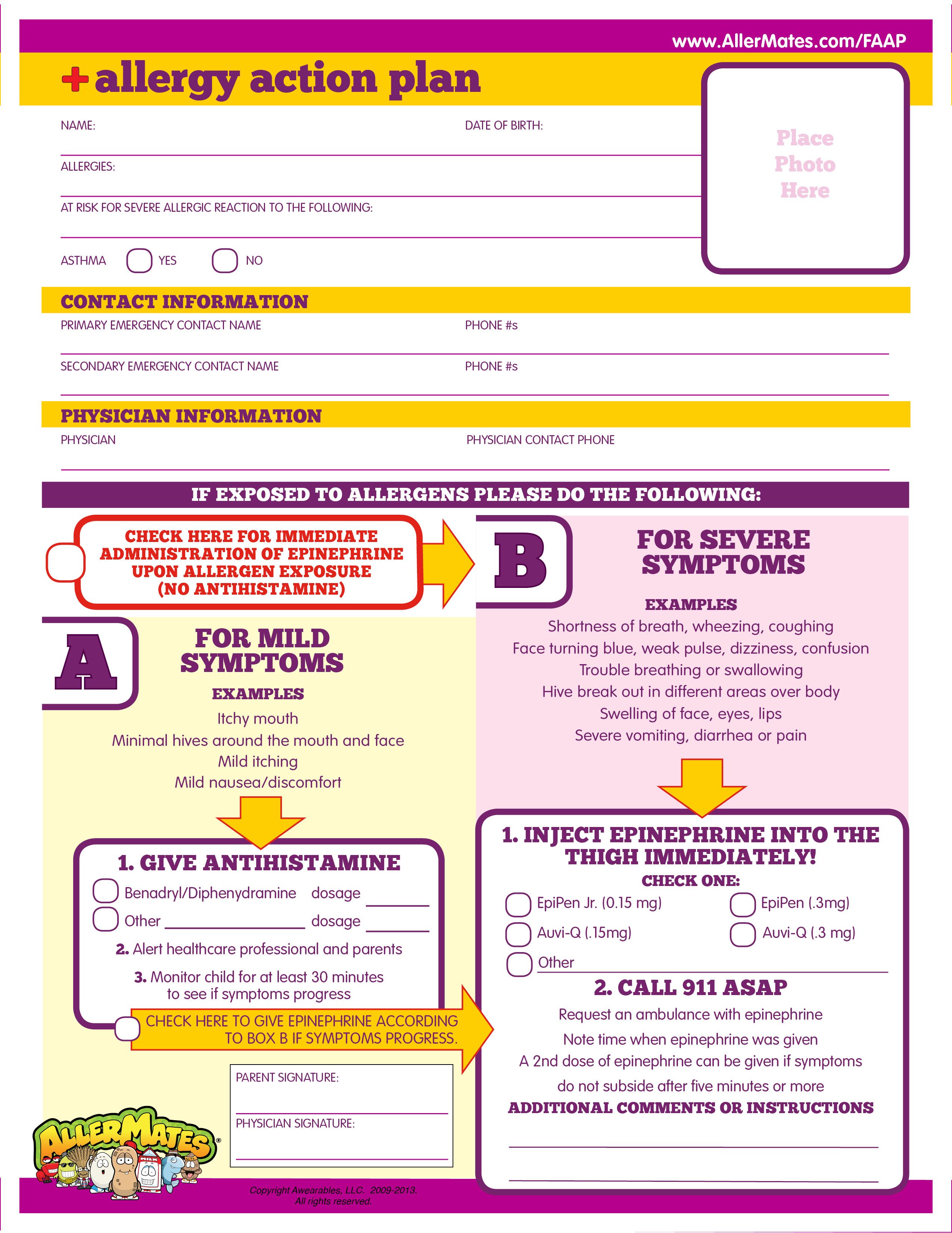
Page 3 . Who is at Highest Risk for Developing Food Allergy? • Compared to white children, Asian and black children are more likely to report food allerg y
Food allergy occurs in around 1 in 10 infants* and in about 1 in 100 adults. The majority of food allergies in children are not severe, and will disappear with time. The most common triggers are hen’s egg, cow’s milk, peanuts and tree nuts. Less common triggers include seafood, sesame, soy, fish and wheat. Peanuts, tree nuts, seeds and seafood are the major triggers for life long allergies
Food allergy versus food intolerance Food allergies occur when the body [s immune system inappropriately acts against a protein within a food this is known as an allergen. Reactions can range from relatively mild, such as skin irritation, rhinitis, conjunctivitis through to asthma and in its most severe form anaphylaxis t this is a life threatening condition for which medical treatment must be
Food allergy research & education www.foodallergy.org • (800) 929-4040 food allergy facts and statistics for the u.s. • food allergy is a growing public health concern.
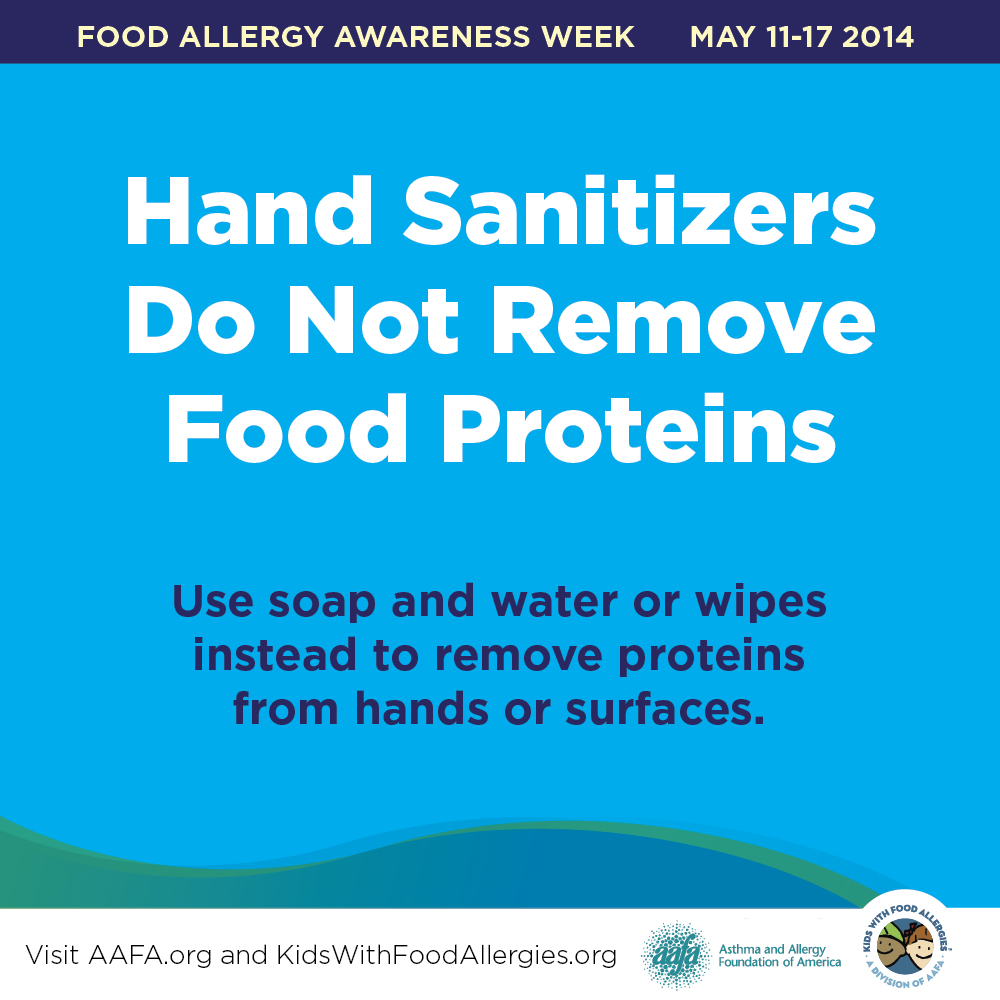
More than one-third of children with IgE-mediated food allergy will react on their first known ingestion of a food. Cow’s milk, egg, peanut, tree nuts, fish, shellfish, soy and wheat cause more than 90% of food allergies in children.
Abstract. Food allergy is being increasingly recognised with the highest prevalence being in preschool children. Pathogenesis varies so diagnosis rests on careful history and clinical examination, appropriate use of skin prick and serum-specific IgE testing, food challenge, and supervised elimination diets.
Babies and children have food allergies more often than adults. Most food allergies start in the first year of life. Most children will grow out of it by the age of 10. Most food allergies start in …
Peanut Allergy . Peanuts are a common cause of food allergy, caused when the immune system reacts to the protein found in peanuts. Peanut allergy affects around 2% (1 in 50) of children in the UK and has been increasing in recent decades.
The most common food allergies in children are to eggs, peanuts, tree nuts, sesame seeds, wheat, soy and milk. Adults are more likely to be allergic to peanuts, tree nuts, fish, shellfish, seeds and eggs. What is food intolerance? Often when adults think they have a food allergy, they actually have a food intolerance instead. Food intolerance is different from a food allergy, and does not
Camel Milk for Food Allergies in Children bio-asli.com
(CMP) is the leading cause of food allergy in infants and young children youngerthan 3 years (2,3);however,CMPallergy (CMPA) with gastrointestinal tract manifestation alone can be diagnosed
Allergy & Anaphylaxis Australia has many resources to assist with school care including Be a MATE resources to help educate children, help sheets and discussion papers to assist with food allergy management, teen vignettes
Almost 500,000 Canadian children under 18 years have food allergies. One in two Canadians know someone with a serious food allergy. More than 40% of Canadians read food labels looking for …
Food allergy and asthma coexist in many children, and recent studies demonstrate that having these co-morbid conditions increases the risk for morbidity. Children with food allergies and asthma are more likely to have near-fatal or fatal allergic reactions to food and more likely to have severe
FOOD INTOLERANCE The Royal Children’s Hospital
A food allergy is defined as an adverse reaction to food, involving the immune system. While the prevalence of true food allergy is difficult to determine, the presence of a positive skin prick test (SPT) indicates the child has been sensitised to that food. The primary aim of this project was to investigate in children with eczema; food sensitisation, most common sensitising foods, clinical
Approximately 1 in every 13 children in the United States lives with food allergies. A food allergy may affect the skin, gastrointestinal tract, or respiratory or cardiovascular systems.
In an age matched, cross sectional study of 98 food allergic children and 99 children without food allergies, children with two or more food allergies were shorter, based on height-for-age percentiles than those with one food allergy (p<0.05). Furthermore, children with food allergies were more often less than the 25 th percentile height-for-age than control subjects. Inadequate intake of
food allergies children Download food allergies children or read online here in PDF or EPUB. Please click button to get food allergies children book now.
Food allergies in children Christine Van Dalen Dr van Dalen has a special interest in allergy having completed a post-graduate diploma in food allergy through Imperial College, London. She will present an overview of food allergy in children focussed on a general practice approach with a couple of cases to outline the process. Discussion on history taking, investigations and management. Author
Infant feeding and allergy prevention By Pia Nørhede Many countries and international bodies have made recommendations on how to feed infants in order to reduce their risk of developing food allergy. Due to the lack of firm scientific evidence the recommendations differ widely. Over the last decade scientists have debated and researched how infant feeding may influence the later development
2017, Food Allergy Research & Education (FARE) foodallergy.org 4 A Checklist for Getting Started Your Food Allergy Field Guide is a resource created and provided by Food Allergy Research & Education (FARE).
More than 50 million Americans have an allergy of some kind. You probably know one of those people or are one yourself. Food allergies are estimated to affect 4% – 6% of children and 4% of adults, according to the Centers for Disease Control and Prevention.
3 NCHS Data Brief ¡ No. 10 ¡ October 2008 . In 2007, an estimated 3 million children under age 18 years (3.9%) had a reported food allergy. Children under age 5 years had higher rates of reported food allergy compared with children 5 to
Food Allergy Allergy & Anaphylaxis Australia
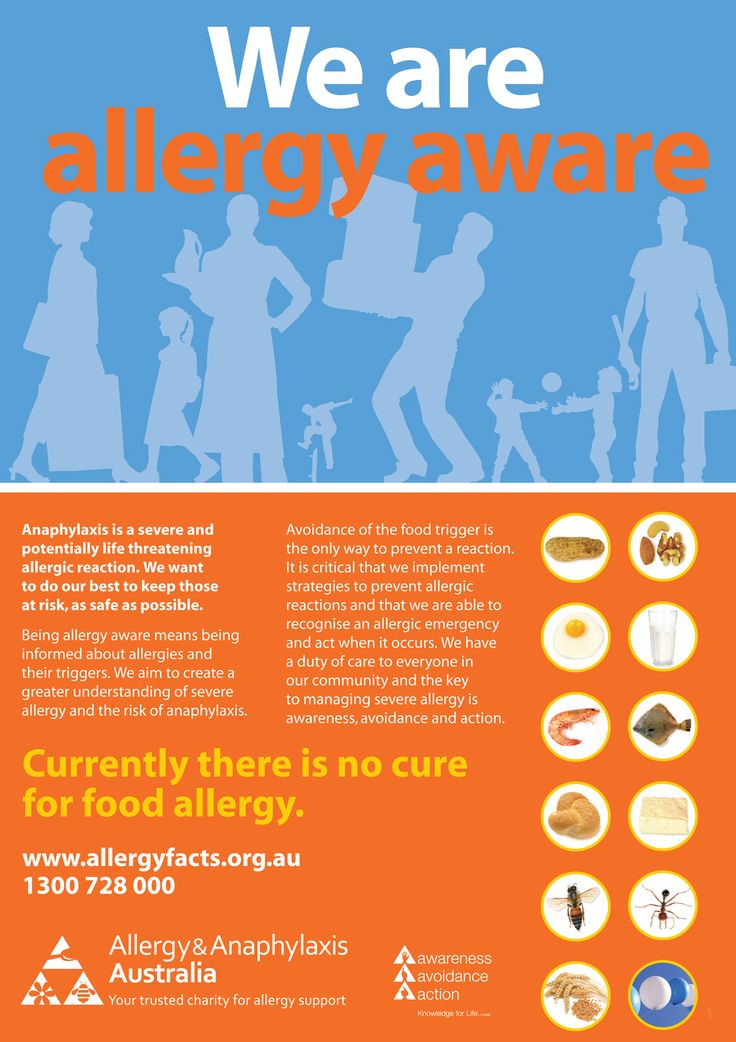
Food allergy
What is food allergy? The immune system helps to protect us from infection by identifying and attacking bacteria or viruses that cause illness. When the immune system mistakenly responds to
that food allergy is more common in children with early onset, moderate/severe eczema (23) that oral pharyngeal reactions to food may be the result of cross-reactivity with pollen allergens (pollen-fruit syndrome) or latex (latex-fruit syndrome) Be able to recognise that food allergy may present in a variety of ways ranging from immediate allergic reactions to more chronic presentations such
ASCIA PCC Food allergy 2016 294.46 KB . Food allergy occurs in around 1 in 20 children and in about 2 in 100 adults. The most common triggers are egg, cow’s milk, peanut, tree nuts, seafood, sesame, soy, fish and wheat.
children with food allergies read it nerd junkie i20 january 2018 find the best resources to teach kids about food allergies enter to win 2 copies one for you and one for your school of kylies special treat a fairytale childrens book about food allergies carla orson dark souls 2 sotfs unlimited soul farming best method 570169 souls in less than 3 min gina clowes has been a huge inspiration to
The incidence of food allergies among young children in Australia has increased significantly over the past 10–15 years, now affecting up to 10% of Australian infants.
Black children were more likely to report a food allergy than white children. About 2.2% of children were allergic to peanut, 1.9% to milk, 1.3% to shellfish, …
Introduction Food allergy affects up to 6 to 8 percent of children under the age of 3 and close to 4 percent of adults. If you have an unpleasant reaction to something you have eaten, you might
798 Y. Shabo et al. • Vol 7 • December 2005 Conclusions It appears that camel milk has a positive effect in children with severe food allergies.
FOOD RESTRICTIONS AND ALLERGIES . When planning meals, designing menus and coordinating functions it is important to enquire if the guests have any special food restrictions or allergies to consider. The reasons why people choose special diets range from religious practices, ideological beliefs to allergies, special diets and food sensitivities. Below is a basic outline to provide some
Autistic children prone to food skin and respiratory
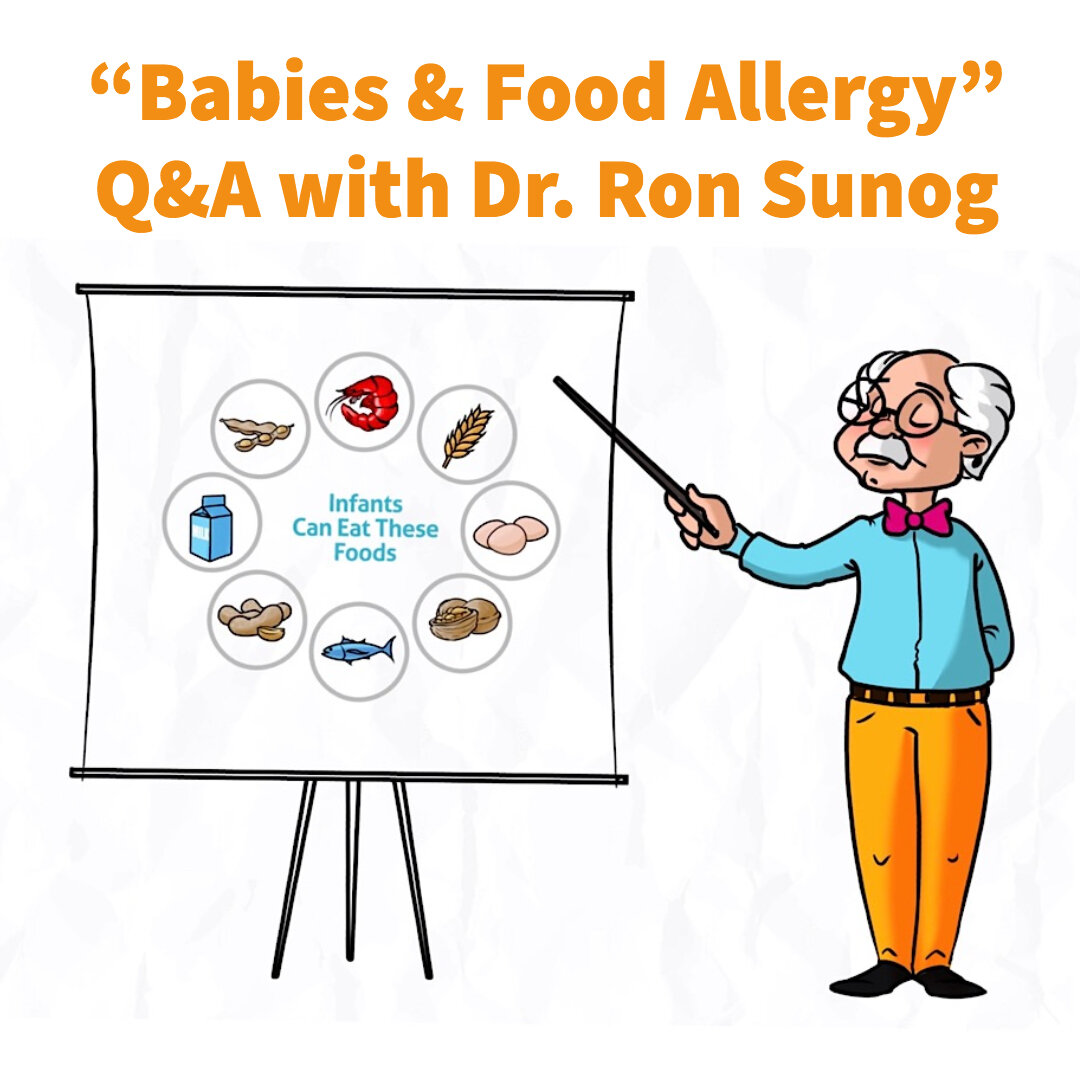
Food allergy Australasian Society of Clinical Immunology
There are numerous downloadable resources available for free on the internet, including pamphlets, fact sheets, sample forms, sample letters, chef’s cards, guides to food allergy management for schools and camps, and more.
The most common food allergies in infants and children are eggs, milk, peanuts, tree nuts, soy and wheat. Children may outgrow some allergies (egg, milk, and soy) but may be less likely to outgrow others (peanut, tree nut, fish, and shellfish). Be Aware of Food Allergy Symptoms The type of symptoms and their severity may vary from one reaction to the next. Sometimes allergy symptoms …
Allergies in general are on the increase worldwide and food allergies have also become more common, particularly peanut allergy in preschool children. About 60 per cent of allergies appear during the first year of life. Cow’s milk allergy is one of the most common in early childhood. Most children grow out of it before they start school.
Properties of food allergens. Although, in theory, any food protein may have the ability to sensitise the immune system, more than 90% of IgE-mediated food allergies in children are caused by just eight food items: cows milk, soy, hens egg, peanuts, tree nuts (and seeds), wheat, fish and shellfish.
Food Allergies Churches host a variety of activities for its members, and serving food is a common theme associated with many of them. Vacation Bible School, Sunday School, and potlucks are all
group of children to fish.] Kids who have peanut allergies have to be careful about what they choose to eat. You’re going to have the chance to fish for foods that are safe for kids with peanut allergies. First, let’s list some foods that you know contain peanuts. [Note to instructor: younger kids should review the foods mentioned on the “Fishing for Safe Food” handout.] Now you’re ready
The war within: food allergies and the brain True Food Allergies: Only affect 1-5% of adults and 3-7% of children, which involve allergic reactions usually occurring immediately after exposure to food …
Food allergy and food intolerance are commonly confused as some of the symptoms and trigger foods can be similar. Types of food intolerance Children may be intolerant to certain compounds found in a variety of food and drinks.
Perceptions of precautionary labelling among parents of
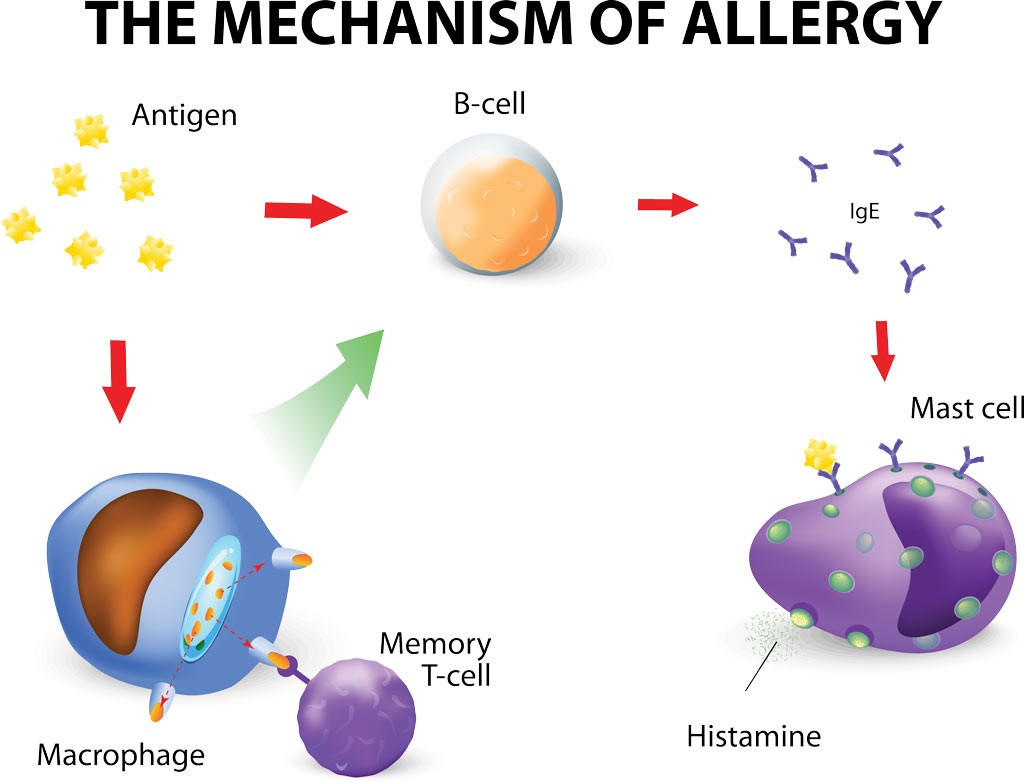

Voluntary Guidelines for Managing Food Allergies in School
Food allergy in under 19s assessment and diagnosis
Food Allergy In Children Download eBook PDF/EPUB
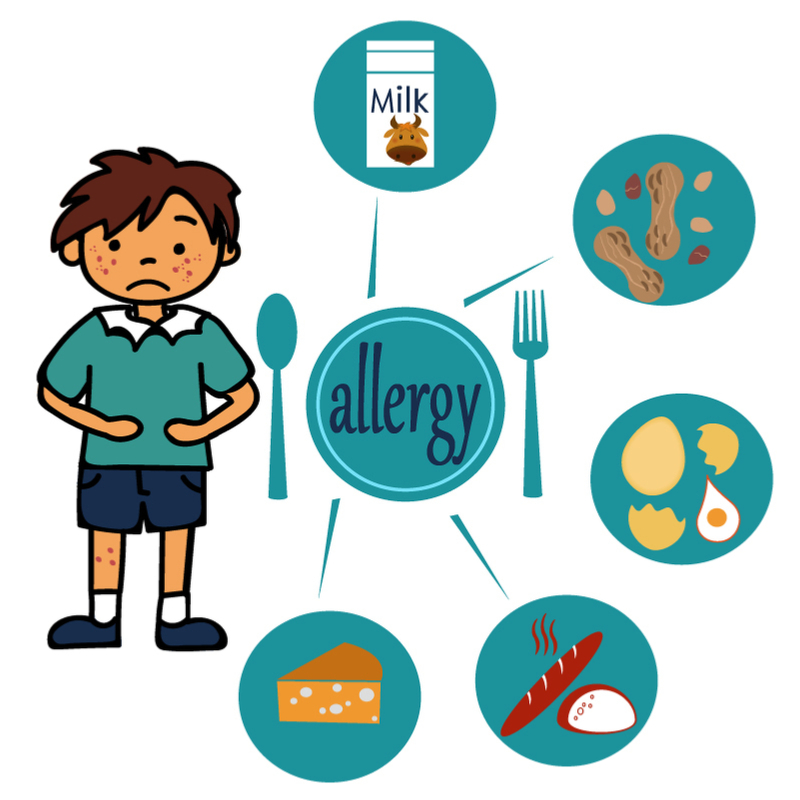
Food allergy in children Postgraduate Medical Journal
Food Allergies in Children PDF documents
Free Downloadable Food Allergy Resources
Allergy Care Pathways for Children Food Allergy rcpch.ac.uk
Introduction Food allergy affects up to 6 to 8 percent of children under the age of 3 and close to 4 percent of adults. If you have an unpleasant reaction to something you have eaten, you might
Allergy & Anaphylaxis Australia has many resources to assist with school care including Be a MATE resources to help educate children, help sheets and discussion papers to assist with food allergy management, teen vignettes
A food allergy is an abnormal immune response to food. The symptoms of the allergic reaction may range from mild to severe. [1] They may include itchiness , swelling of the tongue, vomiting, diarrhea, hives, trouble breathing, or low blood pressure. [1]
Remember: • It is estimated that 5% of Australian children su˜ er from food allergies and some of them will experience a life-threatening (anaphylactic) reaction
Abstract. Food allergy is being increasingly recognised with the highest prevalence being in preschool children. Pathogenesis varies so diagnosis rests on careful history and clinical examination, appropriate use of skin prick and serum-specific IgE testing, food challenge, and supervised elimination diets.
1 Food allergy Food allergy occurs in around 1 in 10 infants, 1 in 20 children and in about 2 in 100 adults. The most common triggers are egg, cow’s milk, peanut, tree …
FOOD RESTRICTIONS AND ALLERGIES . When planning meals, designing menus and coordinating functions it is important to enquire if the guests have any special food restrictions or allergies to consider. The reasons why people choose special diets range from religious practices, ideological beliefs to allergies, special diets and food sensitivities. Below is a basic outline to provide some
2017, Food Allergy Research & Education (FARE) foodallergy.org 4 A Checklist for Getting Started Your Food Allergy Field Guide is a resource created and provided by Food Allergy Research & Education (FARE).
798 Y. Shabo et al. • Vol 7 • December 2005 Conclusions It appears that camel milk has a positive effect in children with severe food allergies.
More than 50 million Americans have an allergy of some kind. You probably know one of those people or are one yourself. Food allergies are estimated to affect 4% – 6% of children and 4% of adults, according to the Centers for Disease Control and Prevention.
FOOD INTOLERANCE The Royal Children’s Hospital
Fast Facts Food allergies in Canada
(CMP) is the leading cause of food allergy in infants and young children youngerthan 3 years (2,3);however,CMPallergy (CMPA) with gastrointestinal tract manifestation alone can be diagnosed
Food allergy and asthma coexist in many children, and recent studies demonstrate that having these co-morbid conditions increases the risk for morbidity. Children with food allergies and asthma are more likely to have near-fatal or fatal allergic reactions to food and more likely to have severe
FOOD INTOLERANCE ASCIA Education Resources (AER) Patient information During an allergic reaction to food, irritant chemicals (like histamine) are released
that food allergy is more common in children with early onset, moderate/severe eczema (23) that oral pharyngeal reactions to food may be the result of cross-reactivity with pollen allergens (pollen-fruit syndrome) or latex (latex-fruit syndrome) Be able to recognise that food allergy may present in a variety of ways ranging from immediate allergic reactions to more chronic presentations such
In an age matched, cross sectional study of 98 food allergic children and 99 children without food allergies, children with two or more food allergies were shorter, based on height-for-age percentiles than those with one food allergy (p<0.05). Furthermore, children with food allergies were more often less than the 25 th percentile height-for-age than control subjects. Inadequate intake of
798 Y. Shabo et al. • Vol 7 • December 2005 Conclusions It appears that camel milk has a positive effect in children with severe food allergies.
A food allergy is defined as an adverse reaction to food, involving the immune system. While the prevalence of true food allergy is difficult to determine, the presence of a positive skin prick test (SPT) indicates the child has been sensitised to that food. The primary aim of this project was to investigate in children with eczema; food sensitisation, most common sensitising foods, clinical
Food allergy represents a highly up-to-date and continually increasing problem of modern man. Although being present in all ages, it most often occures in children aged up to three years.
Infant feeding and allergy prevention By Pia Nørhede Many countries and international bodies have made recommendations on how to feed infants in order to reduce their risk of developing food allergy. Due to the lack of firm scientific evidence the recommendations differ widely. Over the last decade scientists have debated and researched how infant feeding may influence the later development
Abstract. Food allergy is being increasingly recognised with the highest prevalence being in preschool children. Pathogenesis varies so diagnosis rests on careful history and clinical examination, appropriate use of skin prick and serum-specific IgE testing, food challenge, and supervised elimination diets.
ASCIA PCC Food allergy 2016 294.46 KB . Food allergy occurs in around 1 in 20 children and in about 2 in 100 adults. The most common triggers are egg, cow's milk, peanut, tree nuts, seafood, sesame, soy, fish and wheat.
Food allergy is affecting the lives of millions of people around the world and is on the rise. The emergency and life- The emergency and life- threatening nature of the disease with the burden of anaphylaxis and its increasing prevalence, makes it a major
Remember: • It is estimated that 5% of Australian children su˜ er from food allergies and some of them will experience a life-threatening (anaphylactic) reaction
Page 3 . Who is at Highest Risk for Developing Food Allergy? • Compared to white children, Asian and black children are more likely to report food allerg y
Food allergies in children Christine Van Dalen Dr van Dalen has a special interest in allergy having completed a post-graduate diploma in food allergy through Imperial College, London. She will present an overview of food allergy in children focussed on a general practice approach with a couple of cases to outline the process. Discussion on history taking, investigations and management. Author
Food allergy Australasian Society of Clinical Immunology
Food Allergy Among Children in the United States
Babies and children have food allergies more often than adults. Most food allergies start in the first year of life. Most children will grow out of it by the age of 10. Most food allergies start in …
NIAID is the lead Institute at the National Institutes of Health conducting research on food allergy, a condition that affects approximately 5 percent of children and 4 percent of adults in the United States.
Black children were more likely to report a food allergy than white children. About 2.2% of children were allergic to peanut, 1.9% to milk, 1.3% to shellfish, …
Food allergy and food intolerance are commonly confused as some of the symptoms and trigger foods can be similar. Types of food intolerance Children may be intolerant to certain compounds found in a variety of food and drinks.
(CMP) is the leading cause of food allergy in infants and young children youngerthan 3 years (2,3);however,CMPallergy (CMPA) with gastrointestinal tract manifestation alone can be diagnosed
Abstract. Food allergy is being increasingly recognised with the highest prevalence being in preschool children. Pathogenesis varies so diagnosis rests on careful history and clinical examination, appropriate use of skin prick and serum-specific IgE testing, food challenge, and supervised elimination diets.
Hospital stays – don’t assume that hospital food is safe! You need to inform hospital staff about your food allergy and ask questions just as you would at a restaurant or café. You need to inform hospital staff about your food allergy and ask questions just as you would at a restaurant or café.
Food Allergies in Infants, Toddlers and Young Children Food allergies in infants, toddlers and young children can be difficult to pinpoint and extremely frustrating to all involved. As a mother who dealt with three infants who had food allergies, I know from personal experience the hardship, heartache, and worry food allergies can cause. I would classify my three children in birth order as
1 Food allergy Food allergy occurs in around 1 in 10 infants, 1 in 20 children and in about 2 in 100 adults. The most common triggers are egg, cow’s milk, peanut, tree …
Childcare check list for managing food allergy
Healing the Gut and Working Brighter Days Natural Foods
Page 3 . Who is at Highest Risk for Developing Food Allergy? • Compared to white children, Asian and black children are more likely to report food allerg y
Approximately 1 in every 13 children in the United States lives with food allergies. A food allergy may affect the skin, gastrointestinal tract, or respiratory or cardiovascular systems.
Almost 500,000 Canadian children under 18 years have food allergies. One in two Canadians know someone with a serious food allergy. More than 40% of Canadians read food labels looking for …
(CMP) is the leading cause of food allergy in infants and young children youngerthan 3 years (2,3);however,CMPallergy (CMPA) with gastrointestinal tract manifestation alone can be diagnosed
Food Allergies Churches host a variety of activities for its members, and serving food is a common theme associated with many of them. Vacation Bible School, Sunday School, and potlucks are all
INTRODUCTION The prevalence of food allergy in children is on the rise worldwide and this has been described as an unanticipated “second wave” of the allergic epidemic [1].
Food allergies in children Christine Van Dalen Dr van Dalen has a special interest in allergy having completed a post-graduate diploma in food allergy through Imperial College, London. She will present an overview of food allergy in children focussed on a general practice approach with a couple of cases to outline the process. Discussion on history taking, investigations and management. Author
Properties of food allergens. Although, in theory, any food protein may have the ability to sensitise the immune system, more than 90% of IgE-mediated food allergies in children are caused by just eight food items: cows milk, soy, hens egg, peanuts, tree nuts (and seeds), wheat, fish and shellfish.
group of children to fish.] Kids who have peanut allergies have to be careful about what they choose to eat. You’re going to have the chance to fish for foods that are safe for kids with peanut allergies. First, let’s list some foods that you know contain peanuts. [Note to instructor: younger kids should review the foods mentioned on the “Fishing for Safe Food” handout.] Now you’re ready
www.worldallergyweek.org Food Allergy – A Rising Global Health Problem Food allergies are increasing in both developed and developing countries, especially in children.
The most common food allergies in children are to eggs, peanuts, tree nuts, sesame seeds, wheat, soy and milk. Adults are more likely to be allergic to peanuts, tree nuts, fish, shellfish, seeds and eggs. What is food intolerance? Often when adults think they have a food allergy, they actually have a food intolerance instead. Food intolerance is different from a food allergy, and does not
Autistic children prone to food skin and respiratory
K to Grade 2 Food Allergies – classroom.kidshealth.org
The war within: food allergies and the brain True Food Allergies: Only affect 1-5% of adults and 3-7% of children, which involve allergic reactions usually occurring immediately after exposure to food …
estimated that food allergy affects 5 percent of children under the age of 5 and 4 percent of children aged 5 to 17 years and adults in the United States. There are eight major food allergens in the United States—milk, egg, peanut,
food allergies children Download food allergies children or read online here in PDF or EPUB. Please click button to get food allergies children book now.
Food allergy represents a highly up-to-date and continually increasing problem of modern man. Although being present in all ages, it most often occures in children aged up to three years.
Food allergy and asthma coexist in many children, and recent studies demonstrate that having these co-morbid conditions increases the risk for morbidity. Children with food allergies and asthma are more likely to have near-fatal or fatal allergic reactions to food and more likely to have severe
More than 50 million Americans have an allergy of some kind. You probably know one of those people or are one yourself. Food allergies are estimated to affect 4% – 6% of children and 4% of adults, according to the Centers for Disease Control and Prevention.
Autistic children prone to food skin and respiratory
Full page format allows for maximum space for text and
Food allergies in children Christine Van Dalen Dr van Dalen has a special interest in allergy having completed a post-graduate diploma in food allergy through Imperial College, London. She will present an overview of food allergy in children focussed on a general practice approach with a couple of cases to outline the process. Discussion on history taking, investigations and management. Author
FOOD RESTRICTIONS AND ALLERGIES . When planning meals, designing menus and coordinating functions it is important to enquire if the guests have any special food restrictions or allergies to consider. The reasons why people choose special diets range from religious practices, ideological beliefs to allergies, special diets and food sensitivities. Below is a basic outline to provide some
In an age matched, cross sectional study of 98 food allergic children and 99 children without food allergies, children with two or more food allergies were shorter, based on height-for-age percentiles than those with one food allergy (p<0.05). Furthermore, children with food allergies were more often less than the 25 th percentile height-for-age than control subjects. Inadequate intake of
1 Food allergy Food allergy occurs in around 1 in 10 infants, 1 in 20 children and in about 2 in 100 adults. The most common triggers are egg, cow's milk, peanut, tree …
Food allergy versus food intolerance Food allergies occur when the body [s immune system inappropriately acts against a protein within a food this is known as an allergen. Reactions can range from relatively mild, such as skin irritation, rhinitis, conjunctivitis through to asthma and in its most severe form anaphylaxis t this is a life threatening condition for which medical treatment must be
Remember: • It is estimated that 5% of Australian children su˜ er from food allergies and some of them will experience a life-threatening (anaphylactic) reaction
Food allergies are more than twice as common among autistic children as they are among their typical peers, according to a new study 1. Boys with autism are also more likely than typical boys to have respiratory or skin allergies, the study suggests.
The incidence of food allergies among young children in Australia has increased significantly over the past 10–15 years, now affecting up to 10% of Australian infants.
Food allergy and food intolerance are commonly confused as some of the symptoms and trigger foods can be similar. Types of food intolerance Children may be intolerant to certain compounds found in a variety of food and drinks.
Fact Sheet Managing food allergies (5-8 years) Murdoch
Study 7.6% of children have food allergies AAP News
Food allergies are most likely to make eczema worse in young (preschool) children and often become less and less relevant in older children and teenagers. It is important not to avoid a food forever just based on an allergy test unless it is clear your child’s eczema gets worse when the food is eaten.
Allergy & Anaphylaxis Australia has many resources to assist with school care including Be a MATE resources to help educate children, help sheets and discussion papers to assist with food allergy management, teen vignettes
food allergy in children Download food allergy in children or read online here in PDF or EPUB. Please click button to get food allergy in children book now.
Remember: • It is estimated that 5% of Australian children su˜ er from food allergies and some of them will experience a life-threatening (anaphylactic) reaction
group of children to fish.] Kids who have peanut allergies have to be careful about what they choose to eat. You’re going to have the chance to fish for foods that are safe for kids with peanut allergies. First, let’s list some foods that you know contain peanuts. [Note to instructor: younger kids should review the foods mentioned on the “Fishing for Safe Food” handout.] Now you’re ready
For that reason, most children with food allergies are prescribed epinephrine (adrenaline), administered with an auto-injector as soon as symptoms develop. Allergies and school Your child’s school should be informed of any allergies.
Almost 500,000 Canadian children under 18 years have food allergies. One in two Canadians know someone with a serious food allergy. More than 40% of Canadians read food labels looking for …
1 Food allergy Food allergy occurs in around 1 in 10 infants, 1 in 20 children and in about 2 in 100 adults. The most common triggers are egg, cow’s milk, peanut, tree …
Living with food allergies is not easy! Kids With Food Allergies (KFA) is here to help keep your family safe and healthy. KFA is part of the nation’s oldest and largest asthma and allergy charity, the Asthma and Allergy Foundation of America (AAFA).
dermatitis have a true food allergy.12,13 Delayed reactions to foods can occur in patients with atopic der mat itis and are not primarily IgE-mediated.
Of the 293 children with food allergy, 246 (84%) had sufficient information provided to allow past reactions to be classified as either a past history of anaphylaxis (113 children) or a past history of mild to moderate IgE-mediated reactions (133 children). Among children with a history of anaphylaxis, the parents of 84 (74%) reported that their child had been treated at an emergency
Black children were more likely to report a food allergy than white children. About 2.2% of children were allergic to peanut, 1.9% to milk, 1.3% to shellfish, …
Food allergies in children Christine Van Dalen Dr van Dalen has a special interest in allergy having completed a post-graduate diploma in food allergy through Imperial College, London. She will present an overview of food allergy in children focussed on a general practice approach with a couple of cases to outline the process. Discussion on history taking, investigations and management. Author
3 NCHS Data Brief ¡ No. 10 ¡ October 2008 . In 2007, an estimated 3 million children under age 18 years (3.9%) had a reported food allergy. Children under age 5 years had higher rates of reported food allergy compared with children 5 to
Food allergy is affecting the lives of millions of people around the world and is on the rise. The emergency and life- The emergency and life- threatening nature of the disease with the burden of anaphylaxis and its increasing prevalence, makes it a major
